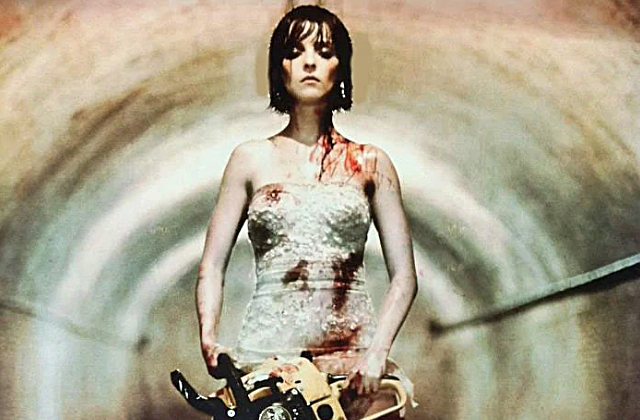Thank you to all who attended the Miskatonic New York lecture “Spanish Horror Towards the 21st Century” with Vicente Rodríguez Ortega. Professor Rodríguez Ortega has been kind enough to provided us with his list of references, for our further edification.
List of References for “Spanish Horror Towards the 21st Century” Lecture
- Aldana Reyes, Xavier. 2015. The [REC] Films: Affective Possibilities and Stylistic Limitations of Found Footage Horror. In Digital Horror: Haunted Technologies, Network Panic and the Found Footage Phenomenon, eds. Linnie Blake and Xavier Aldana Reyes, 149-160. London and New York: I.B. Tauris.
- Aldana Reyes, Xavier. 2016. Horror Film and Affect: Towards a Corporeal Model of Viewership. London and New York: Routledge.
- Benet, Vicente J. 2012. El cine español. Una historia cultural. Barcelona: Paidós.
- Buse, Peter, Triana Toribio, Núria and Willis, Andy. 2007. The Cinema of Álex de la Iglesia, Manchester: Manchester University Press.
- Heredero, Carlos. F. 1998. 20 nuevos directores del cine español. Madrid: Alianza Editorial.
- Ibáñez, Juan Carlos. 2017. Cine, televisión y cambio social en España. Madrid: Síntesis.
- Lázaro Reboll, Antonio. 2008. ‘Now Playing Everywhere’: Spanish Horror Film in the Market. Contemporary Spanish Cinema and Genre. In Contemporary Spanish Cinema & Genre, eds. Jay Beck and Vicente Rodríguez Ortega, 65-87. Manchester: Manchester University Press.
- Lázaro Reboll, Antonio. 2017. Generating Fear: From Fantastic Factory (2000-2005) to [REC](2007-2014). In Tracing the Borders of Spanish Horror Cinema and Television, ed. Jordi Marí, 161-189. London and New York: Routledge.
- Rodríguez Ortega, Vicente. 2020. The Return of Genre in 1990s Spanish Cinema: Industry, Legislative Changes and Economics. Hispanic Research Journal 21, no. 1: 3-22.
- Rodríguez Ortega, Vicente and Romero Santos, Rubén. 2020. Spanish Horror Film: Genre, Television and a New Model of Production In European Cinema in the Twenty-First Century eds. Ingrid Lewis and Laura Canning, 317-333. London: Palgrave-MacMillan.
- Rowan-Legg, Shelagh. 2013. Don’t Miss a Bloody Thing: [REC] and the Spanish Adaptation of Found Footage Horror. Studies in Spanish & Latin American Cinemas 10, no. 2: 213-223.
- Rowan-Legg, Shelagh. 2016. The Spanish Fantastic: Contemporary Filmmaking in Horror, Fantasy and Sci-fi. London: Bloomsbury Publishing.
- Sexton, Jamie. 2015. Creeping decay: cult soundtracks, residual media, and digital technologies. New Review of Film and Television Studies 13, no. 1: 12-30.
- Telotte, J. P. 2001. The Blair Witch Project Project: film and the internet.’ Film Quarterly 54, no. 3: 32-39.
- Tompkins, Joe. 2014. Re-imagining’ the canon: examining the discourse of contemporary horror film reboots, New Review of Film and Television Studies 12, no. 4: 380-399.
- Willis, Andrew .2008. The Fantastic Factory: the Horror Genre and Contemporany Spa-nish Cinema’. In Contemporary Spanish Cinema & Genre, eds. Jay Beck and Vicente Rodríguez Ortega, 27-43. Manchester: Manchester University Press.

